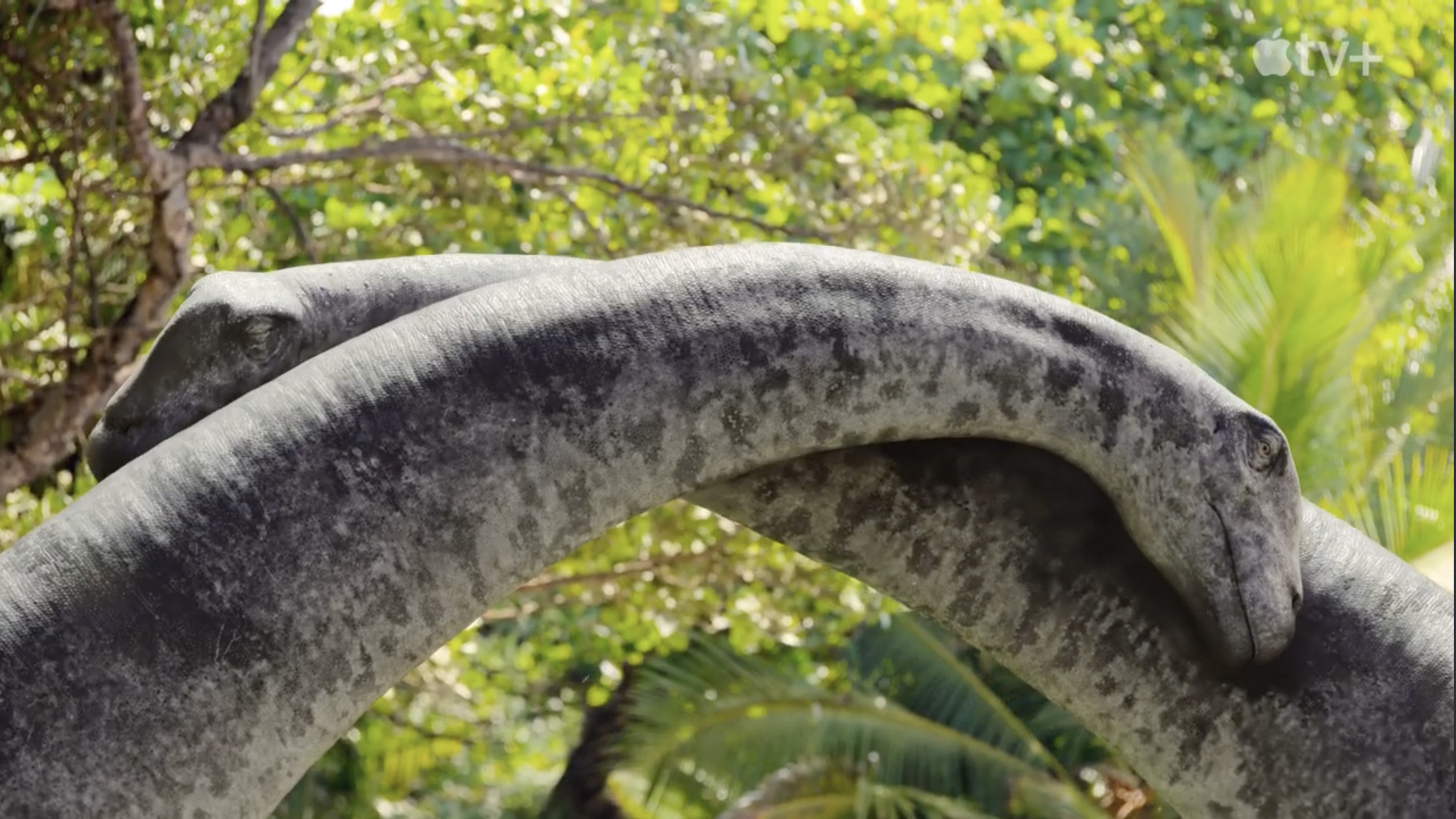Cretaceous dinosaurs come to life in stunning footage from 'Prehistoric Planet'
New research and stunning animation showcase the incredible inhabitants of ancient Earth.
Tyrannosaurus rex youngsters paddle through shallow ocean water near a sandy shore, their powerful legs working hard to make up for their disproportionately tiny arms. Long-necked sauropods nuzzle their heads together in affectionate mating displays. And packs of duck-billed dinosaurs raise dust clouds as they migrate across vast deserts. These and other scenes in the official trailer for "Prehistoric Planet," a new documentary series from Apple TV+, offer a glimpse of dinosaurs and their Cretaceous neighbors, much in the way a nature documentary would feature dramatic moments in the lives of modern animals.
Released on April 20, the trailer showcases stunning footage from around the world, combined with astonishingly realistic computer-generated imagery, to bring an assortment of Cretaceous creatures back to life — and to challenge what viewers thought they knew about these animals that once dominated ecosystems on every continent.
The new five-part series introduces habits, lifestyles and behaviors of long-extinct species and shows how dinosaurs that lived millions of years ago interacted, Apple TV+ representatives said in a statement.
With scenes that unfold beneath the ocean's surface to brutal battles on icy plateaus, the trailer features diverse habitats and offers a fresh perspective on a variety of dinosaurs, from the famed Triceratops to the less-familiar, heavily armored and tanklike Nodosaurus.
Related: 10 extraordinary dinosaur discoveries from 2021
Renowned nature documentary presenter Sir David Attenborough narrates the series, and the trailer hints at untold stories about thrilling mating competitions between colossal sauropods; standoffs between theropod predators and Triceratops prey; and the nesting habits of cliff-dwelling pterosaurs. (Pterosaurs were flying archosaurs, not dinosaurs, but they lived alongside dinosaurs during the Jurassic, Triassic and Cretaceous periods.)
Recent discoveries in paleontology informed how the dinosaurs and other Cretaceous animals of "Prehistoric Planet" look, move and behave, according to Apple TV+. Viewers will meet two relatively recently discovered species of tyrannosaur: Qianzhousaurus rex from eastern China, described in 2014 in the journal Nature Communications, and the diminutive Nanuqsaurus — whose name means "polar bear lizard," taken from the Alaskan Inupiat word "Nanuq" — which was also described in 2014, in the journal PLOS One.
Get the world’s most fascinating discoveries delivered straight to your inbox.

Qianzhousaurus was slightly smaller and more slender than T. rex, Live Science reported in 2014. It had a long snout, which led scientists to lend it the nickname "Pinocchio rex."
Other well-known dinosaurs, such as Velociraptor, have previously appeared in popular movies wearing scaly, lizard-like skin, but in the "Prehistoric Planet" trailer, these dinosaurs are covered in feathers, reflecting recent discoveries about how commonly feathers appeared across the theropod lineage. In one of the trailer's most dramatic images, an extreme close-up of a Velociraptor's enormous claw hints at further adaptations that contributed to this dinosaur's reputation as a deadly predator.
We'll be bringing you more sneak peeks of this series in the coming weeks, check back here at Live Science for more theropod teasers and sauropod surprises!
"Prehistoric Planet" premieres May 23 on Apple TV+.
Originally published on Live Science.

Ailsa is a staff writer for How It Works magazine, where she writes science, technology, history, space and environment features. Based in the U.K., she graduated from the University of Stirling with a BA (Hons) journalism degree. Previously, Ailsa has written for Cardiff Times magazine, Psychology Now and numerous science bookazines. Ailsa's interest in the environment also lies outside of writing, as she has worked alongside Operation Wallacea conducting rainforest and ocean conservation research.


